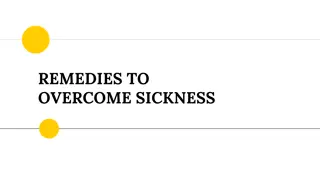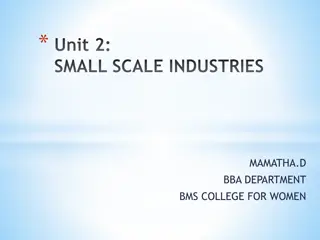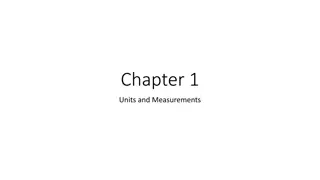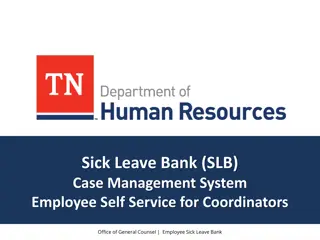Understanding Financial Management of Sick Units in Industries
Thousands of crores of bank funds get locked up in sick industrial units due to mismanagement and external factors. Learn about the causes of sickness, internal and external factors contributing to industrial failure, and the importance of effective financial management in preventing corporate bankruptcy.
Download Presentation

Please find below an Image/Link to download the presentation.
The content on the website is provided AS IS for your information and personal use only. It may not be sold, licensed, or shared on other websites without obtaining consent from the author. Download presentation by click this link. If you encounter any issues during the download, it is possible that the publisher has removed the file from their server.
E N D
Presentation Transcript
Financial management of sick units
Introduction Tens of thousands of crores of bank funds and institutional resources are locked up in sick units. These out standings are in addition to unpaid arrears of excise duty, sales tax, provident fund, wages, power bills and so on. If financial matters are ignored(mobilization and deployment of funds) such firm is bound to face sickness. The phenomenon is also called corporate Bankruptcy.
Definition of sickness A sick industrial unit may be defined as one when it fails to generate surplus as a continuous basis and depends on frequent infusion of external funds for its survival. According to RBI if industrial unit has incurred cash loss in the previous accounting year and is likely to continue to incur cash loss in the current accounting year and has an erosion on account of cumulative cash losses to the extent of 50 % of those of its net worth.
Causes of sickness A firm remains healthy if it 1) operates in a reasonably favorable environment. 2) has a fairly efficient management. when these conditions are not satisfied the firm is likely to become sick.
Internal factors - According to RBI it was noticed that mismanagement and bad administration leads to industrial sickness to the extent 52%. Finance faulty financial planning, wrong capital structure, ineffective investment decisions, absence of feedback, wrong cash management, weak budgetary control, absence of responsibility accounting, inadequate management information system, poor management of receivables, strained relationship with suppliers of capital, improper tax planning. Marketing Inaccurate demand projection Improper product mix Wrong product positioning Irrational price structure Inadequate sales promotion High distribution cost Poor customer service.
Internal factors Production Improper location Wrong technology Uneconomic plant size. Unsuitable plant and machinery Poor quality control Improper maintenance of equipments Personnel Ineffective leadership Bad labour relationships Inadequate human resources Over staffing Weak employee commitment Irrational compensation structure
External Factors Infrastructure Financial Problem of transportation Non availability of external funds High cost of funds Problem of power SEBI and RBI policies Problem of water Devaluation of rupee Problem of communication
External Factors Market Threat from MNCs Market saturation Technological revolution Sudden decline of govt. orders Import and export policies Change in tastes and fashions Government Others Flood, famines, earthquakes Shortage of raw materials International political crisis Strikes and lockouts Social ethnic problems Industrial recession.
Symptoms of sickness Delay or default in payment to suppliers. Irregularity in the bank account Non submission of information to banks and financial institutions. Frequent request to Banks and financial institutions for additional credit. Decline in capacity utilization Poor maintenance of plant and machinery Decline in the price of equity shares and debentures Excessive turnover of personnel Window dressing in accounting Inability to take trade discount























